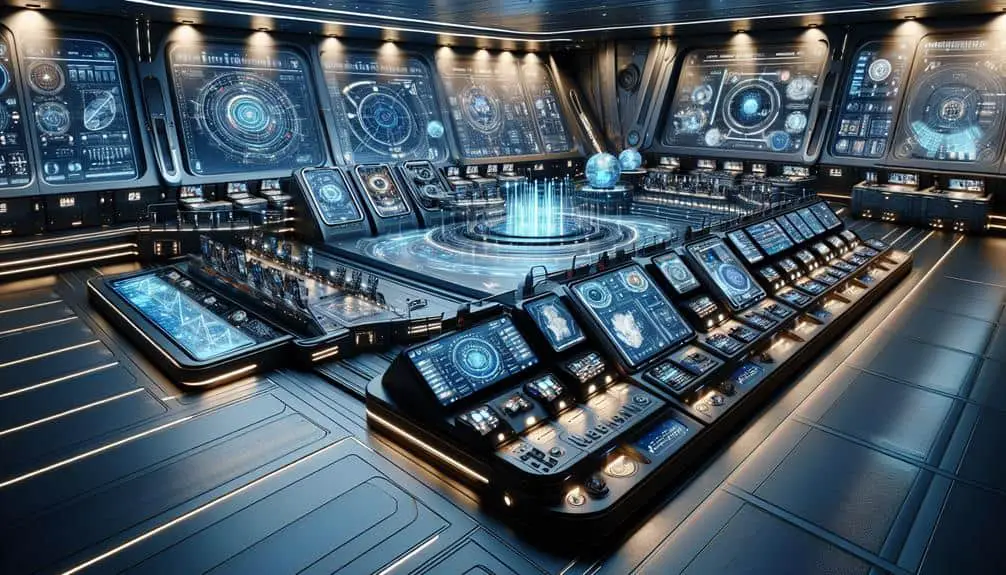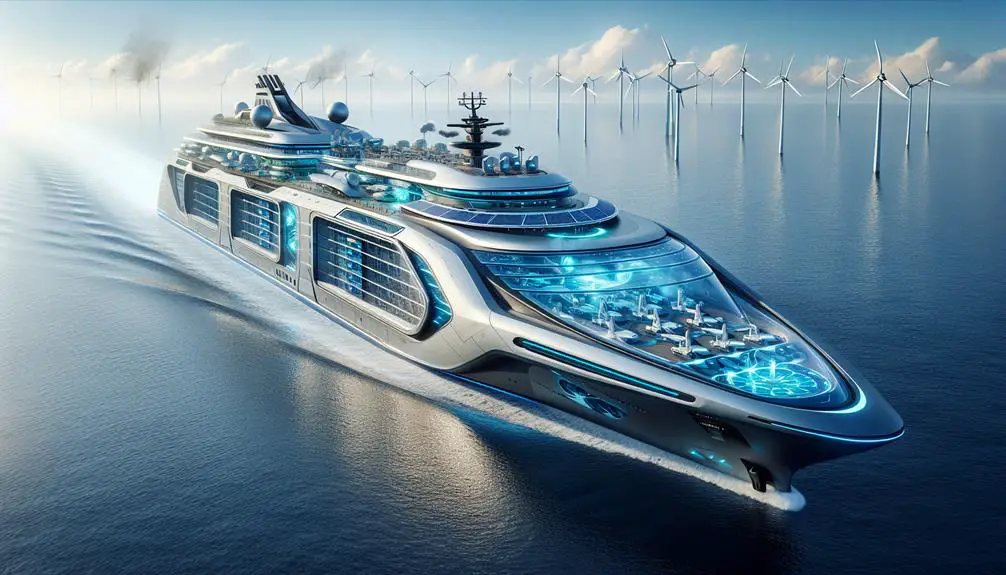Enhance your cruise ship experience with cutting-edge navigation systems. Experience advanced GPS tracking for precise route planning using a network of satellites. Optimize routes with AI algorithms considering weather conditions and sea currents. Train with virtual reality simulations to refine decision-making skills. Utilize automated collision avoidance systems with radar and lidar sensors for safety. Get real-time weather updates for smooth sailing. Uncover the top 5 innovative cruise ship navigation systems now.
Key Points
- Advanced GPS Tracking Systems for pinpoint accuracy in route planning and navigation.
- AI-Powered Route Optimization Technology for real-time adjustments and safe navigation.
- Virtual Reality Navigational Simulations for immersive training and decision-making practice.
- Automated Collision Avoidance Systems for continuous monitoring and risk assessment.
- Real-Time Weather Forecast Integration for proactive route adjustments based on weather patterns.
Advanced GPS Tracking Systems
Advanced GPS tracking systems enhance cruise ship navigation by providing real-time location data with pinpoint accuracy, ensuring precise route planning and safety for passengers and crew. Improved accuracy is achieved through a network of satellites that continuously transmit signals to the ship's onboard receivers, allowing for precise positioning even in challenging weather conditions or remote locations. By integrating this data with advanced mapping software, navigators can plot ideal routes, taking into account factors such as weather patterns, traffic density, and potential obstacles. This level of accuracy not only enhances the efficiency of travel but also greatly reduces the risk of accidents or navigational errors.
In terms of enhanced safety, the real-time tracking capabilities of these systems enable immediate response in case of emergencies, such as man overboard situations or medical crises. By knowing the exact location of the ship at all times, rescue operations can be swiftly coordinated, increasing the chances of a successful outcome. Additionally, the ability to monitor the ship's movements with precision helps in avoiding collisions with other vessels or natural hazards, further ensuring the safety of everyone on board.
AI-Powered Route Optimization Technology
Utilizing artificial intelligence algorithms, cruise ships can now optimize routes with precision and efficiency to enhance navigation capabilities. AI-powered decision-making processes analyze vast amounts of data, including weather conditions, vessel speed, fuel consumption, and sea currents, to determine the most efficient route for the ship. By continuously updating and adjusting the route planning optimization in real-time, these systems can help cruise ships reach their destinations faster while conserving fuel and minimizing environmental impact.
The AI algorithms consider various factors such as traffic in waterways, potential hazards, and best speed adjustments to guarantee safe and efficient navigation. This advanced technology enables cruise ships to adapt to changing conditions swiftly, making strategic decisions that benefit both the passengers and the crew.
Virtual Reality Navigational Simulations provide an immersive training environment for cruise ship operators to enhance their skills and decision-making processes. These simulations offer realistic scenarios that allow operators to experience various challenges they may encounter at sea. By immersing users in a virtual environment that closely mirrors real-world situations, operators can develop their abilities in a safe and controlled setting.
Training programs utilizing virtual reality technology offer immersive experiences that engage multiple senses, enhancing the learning process. Operators can practice responding to changing weather conditions, maneuvering through busy waterways, and handling emergency situations in a risk-free virtual setting. This hands-on approach enables them to refine their skills, improve their reaction times, and make more informed decisions while operating a cruise ship.
Automated Collision Avoidance Systems
Navigational training in virtual reality simulations can seamlessly translate into practical applications with the integration of Automated Collision Avoidance Systems on cruise ships. These systems employ advanced sensors such as radar, lidar, and cameras to detect obstacles in the ship's vicinity. By continuously monitoring the surrounding environment, these systems enhance collision prevention measures, ensuring navigational safety.
Automated Collision Avoidance Systems work by analyzing data from various sensors to assess the risk of potential collisions. In the event of a potential threat, these systems can autonomously adjust the ship's course or speed to avoid accidents. This real-time decision-making capability significantly reduces the reliance on manual intervention, improving response times and overall safety.
The integration of Automated Collision Avoidance Systems represents a notable advancement in maritime technology, offering a proactive approach to enhancing navigational safety. By leveraging cutting-edge technologies, cruise ships can mitigate risks and enhance passenger and crew safety during voyages. Embracing these innovative systems underscores a commitment to excellence in maritime operations and passenger well-being.
Real-Time Weather Forecast Integration
The seamless integration of real-time weather forecast data enhances the cruise ship's navigational capabilities, optimizing safety and efficiency during voyages. By leveraging satellite communication technology, cruise ships can access up-to-the-minute weather updates from anywhere in the world, enabling captains to make informed decisions in real-time. Predictive analytics play a pivotal role in this integration, allowing for the interpretation of complex weather patterns and the anticipation of potential hazards along the ship's route. These advanced systems not only provide captains with accurate weather forecasts but also offer insights into how changing weather conditions may impact the ship's trajectory.
Through the integration of real-time weather forecast data, cruise ships can proactively adjust their routes, speeds, and schedules to avoid turbulent weather systems and guarantee a smooth sailing experience for passengers. This level of precision and foresight is instrumental in enhancing the safety and overall navigational efficiency of modern cruise ships, demonstrating the power of technology in maritime operations.
Frequently Asked Questions
When sailing, cruise ship navigation systems utilize sonar technology to detect obstacles like debris and marine wildlife in the water. These advanced systems promptly factor in water currents to adjust course and avoid collisions.
Are There Any Potential Privacy Concerns With the Use of Ai-Powered Route Optimization Technology on Cruise Ships?
When utilizing AI technology for route optimization on cruise ships, it's important to address potential privacy concerns. As data is collected and analyzed for efficiency, ensuring passenger information remains secure becomes paramount in maintaining trust and compliance.
Virtual reality simulations provide immersive crew training for piloting complex scenarios, including challenges like avoiding marine wildlife. These simulations enhance skills in a realistic environment, ensuring crew members are well-prepared to handle various piloting situations efficiently and effectively.
Can Automated Collision Avoidance Systems on Cruise Ships Adapt to Changing Weather Conditions or Other Environmental Factors?
Automated collision avoidance systems on cruise ships utilize adaptive technology to respond to changing weather conditions and other environmental factors in real-time. These systems enhance safety by adjusting course and speed to prevent collisions.
To guarantee accurate and reliable real-time weather forecast integration for safe navigation, cruise ships utilize advanced systems that continuously receive and analyze weather data. By incorporating this information into navigation algorithms, ships can navigate safely and efficiently.




